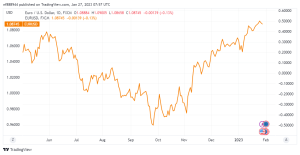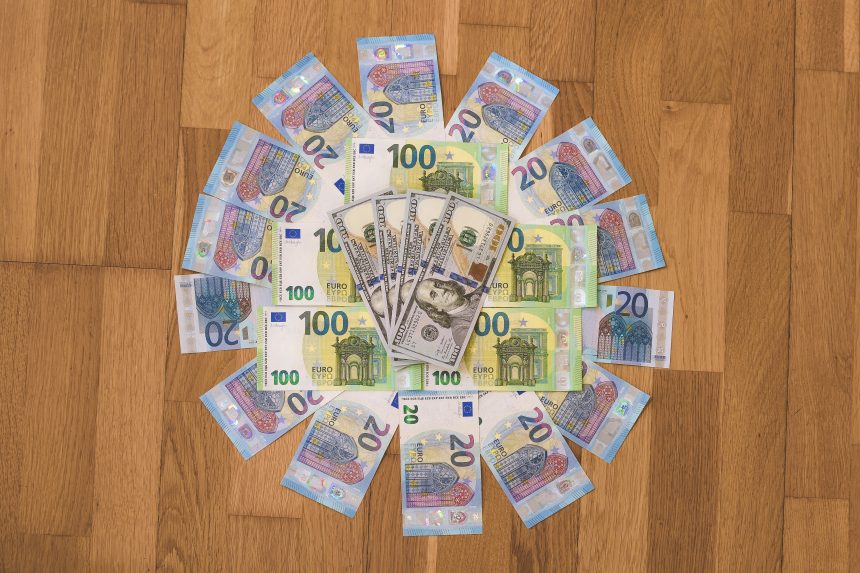EURUSD has lost ground and dropped below 1.0900.
After snapping a six-day winning run on Thursday, the Euro (EURUSD) has continued to fall early Friday. The pair holds above the important support that appears to have established at 1.0850, although the near-term technical picture indicates a dearth of buyer activity. The US Bureau of Economic Analysis (BEA) reported on Thursday that the real Gross Domestic Product (GDP) increased at an annual pace of 2.9% in the fourth quarter. This figure exceeded the market’s forecast of 2.6%, causing US Treasury bond rates to rise. As a result, the US Dollar remained strong versus its competitors in the second part of the day, forcing EURUSD to remain under pressure.
A strong US PCE inflation data might push the EURUSD pair lower.
The recent unfavorable change in risk sentiment makes it tougher. expected the duo to launch a comeback on Friday morning. At the time of publication, US stock index futures were down 0.2% to 0.7%. Nonetheless, the US Dollar Index is struggling to gain positive momentum, allowing the EURUSD to contain its losses for the time being. The BEA will issue the Personal Consumption Expenditures (PCE) Price Index data, the Federal Reserve’s (Fed) favored indicator of inflation, in the second half of the day. Core PCE inflation is expected to grow 0.3% month on month in December. Unless core PCE inflation is negative or near-zero, the negative impact of weaker inflation data on the US Dollar should be limited.
Markets have already completely factored in two further 25 basis point Fed rate hikes in February and March are unlikely to change that, and the lagging PCE inflation data is unlikely to change that.
A stronger-than-expected figure, on the other hand, might help the US Dollar gain strength versus its key competitors ahead of the weekend, opening the door to an extended decline in EURUSD. Again, this data should not have a substantial impact on the Fed’s rate forecast, but investors should avoid betting against the US Dollar ahead of the weekend.
Technical Outlook
EURUSD fell below the ascending regression channel. Despite returning to that channel during Asian trading hours, the pair lost momentum and finished the latest four-hour candle below the lower-limit. Furthermore, the pair is presently trading below the 20-period Simple Moving Average (SMA), and the Relative Strength Index (RSI) indicator is still slightly below 50, indicating that buyers are staying away.

On the downside, the major support level is 1.0850 (static level, 50-period SMA). If the EURUSD goes below that level and begins to use it as resistance, it may continue to decline into the 1.0800/1.0790 range (psychological level, static level, 100-period SMA).
If EURUSD rises and stabilizes above 1.0900 (20-period SMA, bottom boundary of the channel), it might continue its gains rebound toward 1.0930 (ascending channel midpoint, static level) and 1.0980 (former support, static level).









